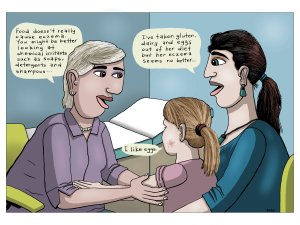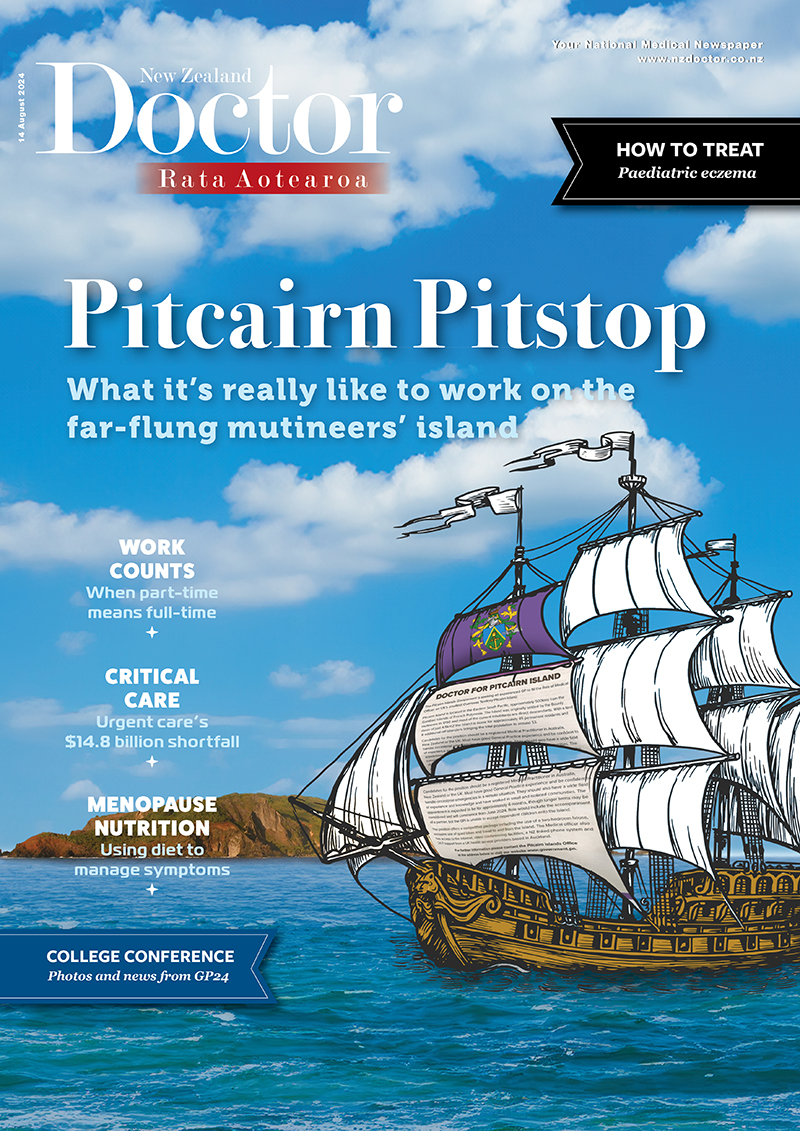Specialist GP Nikki Vadgama provides some tips to make your next paediatric eczema consult easier. She includes a review of new guidelines, resources, websites and medications for paediatric eczema management
Words and pictures
Words and pictures

Are doctors being taught drawing skills as part of their communication modules, wonders locum GP Jim Vause
Are the sketch-covered scraps of prescription paper that litter my rubbish bin proof that a picture is worth a thousand words? Or are my oratory skills as bad as my drawing?
Trouble is, were it not for my hieroglyphs, getting across to my patients key health ideas and concepts would be next to impossible.
In this belief I have good company, for that great Australian global engineering and infrastructure advisory company Aurecon (whoever they are) are to use a “visual employment contract, eliminating more than 4 000 words from their employment contracts to create a succinct and meaningful visual contract that uses illustrations to complement the text.”
There are three factors that make humans unique on this world. Language is the first that leads onto the second; namely the ability to teach; which results in culture, technology and thus H Sapiens becoming the dominant species on this third rock from the sun.
Many believe intelligence is also central to this human success despite many other species demonstrating great intelligence and the difference between us and them being only a matter of degree.
Alas our inability to control our global population and humans’ propensity towards environmental destruction suggests our intelligence may not be enough to assure our long-term survival and medicine is no different.
Teaching and language enable the passing of knowledge from both generation to generation and also across more than two in one step. This is further enhanced by writing which greatly improves the accuracy, longevity and reliability of knowledge transmission compared with oral.
So, with languages and writing so good and words so concept and meaning rich, why am I drawing graphs and pictures to communicate health matters to patients? Is it because medical speak is too obtuse for the average punter? Have we made medical concepts too complex for ordinary words? Is this deliberate, part of the paternalistic control game of old, and part of the hierarchical world of medicine that once required all doctors to learn an archaic language used only by priests and lawyers? I wonder if Mandarin, Māori or Java would have been better languages to learn?
Nowadays, doctors are actually taught how to communicate with patients as opposed to the expectation that such skills would be acquired by osmosis, as in the hospital ward learning environment of my youth. But does anyone teach young doctors how to draw or even what to draw? Is there a medical pictogram dictionary? A scaffold in vocational training?
If a picture is worth a thousand words, then a photograph must be worth a lot more for they are true representations. So, what’s the message in this one?
- Log in to post comments





